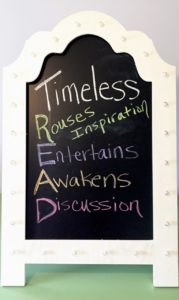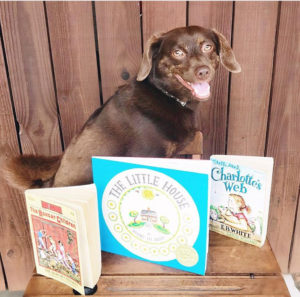In just a few weeks our first book, Minna and the Canine Club, will be rolling off the printing press. This exciting event has led to many conversations about our favorite childhood books. During one of these discussions I was surprised to learn that my favorite book as a kid was also my mother’s favorite book. How could that be? Surely The Boxcar Children wasn’t around when my mother was a kid! Now I know how my students felt when I said that as a kid I enjoyed the same book that they were reading. They looked at me like, how could that be? I checked it out to make sure my mother’s memory wasn’t failing her. The Boxcar Children’s first copyright was 1942 and my mother would have been six years old. I knew my two daughters loved the book; it was my favorite childhood book and now I know it was my mother’s favorite book as well. Just what makes a book a great read, so great that it is enjoyed by multiple generations?
The Boxcar Children had a certain amount of intrigue. I loved hearing about how four orphan children used their resourcefulness to survive. They turned a deserted boxcar into their home; they got their dishes from the dump, they made a broom out of a stick and needles from the woods. Not to mention the mouth-watering supper of bread, butter, dried meat, milk, and cookies that they scraped together. As a young reader I enjoyed the story because I wanted to know what these children would find and how they would use it to help them survive. The four children were not only resourceful but they demonstrated courage, hard work, and love. They were inspiring. Maybe that answers my question. A great book becomes timeless if it is inspirational as well as entertaining.
As a parent and a teacher I found that there were many lessons that could be taught while reading The Boxcar Children. These lessons included both academic and life skills. We discussed the time period the book was written (copyright 1942) and what was happening in our country. The United States just entered World War 2, the average cost of a gallon of gas was 15 cents, a bottle of coke was 5 cents, and the cost of the average house was $3,770.00. Everyone had to be resourceful during the war. Children helped collect scrap metal and fabric to be used in the war effort. Today we would call it recycling. The children in the story would recycle junk and use it for something they needed. Actually that fits the definition of technology, which is the use of an idea, method, or tool to solve a problem. The book seemed like a simple story that was entertaining but it was filled with golden nuggets that provided rich ideas to be discussed. Indulge me as I share these few:
- Compare and contrast the children in the story to children today.
- Predict what children would do to be resourceful in today’s world.
- Discuss the theme (main message) of the story.
- List the characteristics of each of the main characters
- Make a generalization about the children.
- Summarize the story and include the setting, main characters, problem, important events, and the solution.
- Point of view- The story was written in third person but how would it have been different if it had written in first person with one of the children telling the story?
- What was the author’s purpose (entertain, inform, or persuade) in writing the book and did she accomplish that purpose?
- Create something you can use from recycled junk.
- What life skills did the children demonstrate that helped them solve their problem? These are just some examples: perseverance, courage, cooperation, caring, respect, compassion, problem solving.
- What life skills do you need to help you be successful?
I invite you to find a great book that is timeless, inspirational, entertaining, and provokes opportunities for discussion and learning. Happy reading!
Shelli



